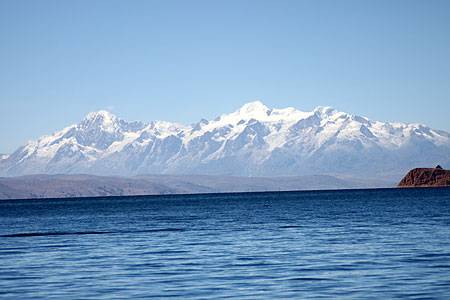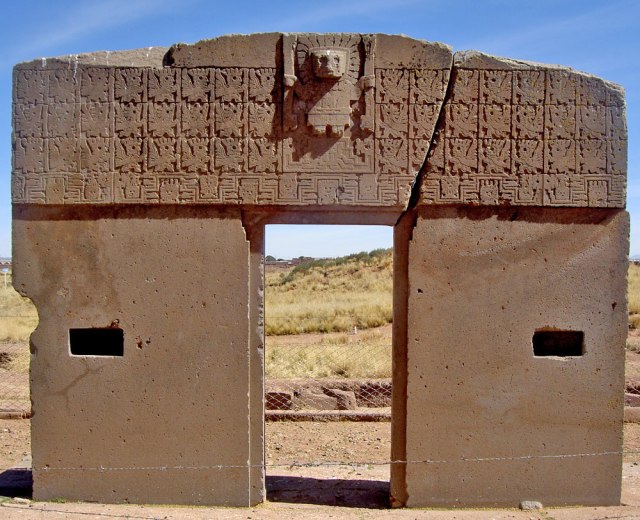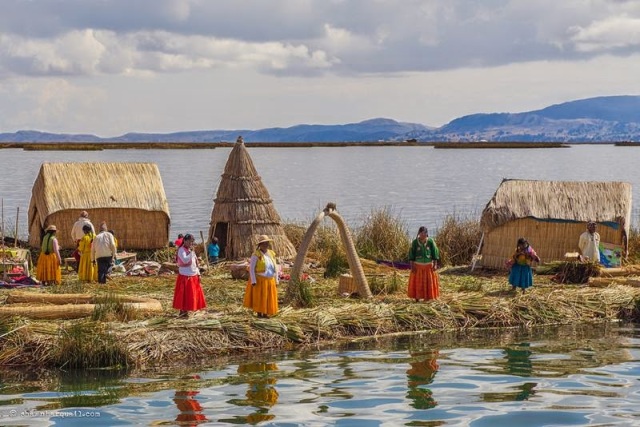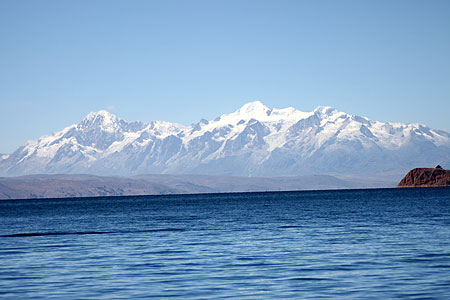Updated: December 8th, 2020.
Lake Titicaca is the largest, deepest, highest navigable lake in the world, with a surface elevation of 3,812 meters (12,507 ft), a surface of 3,200 square miles and up to 1,000 feet in depth. The lake lies on the border between Bolivia and Peru and is the ancient birthplace of the Inca culture. Several of it´s 41 islands are sacred, and tourists can visit them from either Puno, in Peru, or from Copacabana, in Bolivia.

Due to its location right on the border between Peru and Bolivia, Lake Titicaca is a crossing point for many tourists who travel between Cuzco and Uyuni, be it through Puno or through Copacabana. Tourists traveling between Peru and Bolivia often just pass by or spend just a few hours on the shores of the lake. We think this amazing body of water merits you staying just a little longer in order to take in all the cultural, natural and historical attractions it has to offer.
The legend
The Incan sun God, Viracocha, rose up from the centre of the world, Lake Titicaca, and from there He created the moon and the stars. Then he went to Tiwanaku to create the first human beings, Mallku Kapac and Mama Ocllo, who populated the world. Lake Titicaca is, then, the cradle of the Incan empire. The spot in which Viracocha was born is Isla del Sol, or Islad of the Sun, the largest island on the lake and a place of unkanny energy and beauty.

Tiwanaku
Tiwanaku is a ruined ancient city near Lake Titicaca in western Bolivia, just two hours away from Copacabana by bus. Dominating the ruins, once the seat of the pre-Columbian Tiwanaku culture, are the Akapana pyramid, the place of worship of the “world of above”, and a semi-subterranean temple with carved images of human heads, the place of worship of the “nether world”. Nearby Kalasasaya is an open temple with stone monoliths and the huge Puerta del Sol, or Gate of the Sun. On the 21st of June, the celebration of the Aymara new year brings hundreds of people to watch the sun raise in the arch after the longest night of the year. The Museo del Sitio de Tiwanaku displays artifacts excavated from the site. The Tiwanaku culture pre-dates the Inca empire, and it was filled with scientists and astronomers. It is said that the Tiwanaku empire spread all the way to the pacific ocean.

The Island of the sun
A one-hour boat ride from Copacabana, Isla del Sol has ruins of ancient temples, coupled with breathtaking sights of the Andes and the crisp blue waters of the sacred lake. The largest of all the lake islands (but still only 5.5 by 3.75 miles in size), Isla del Sol was considered the home of the supreme Inca god Inti.
There are many attractions on the island. On the north end, is the town of Challapampa, home to the fascinating Chinkana (labyrinth). A huge stone complex full of mazes, it is thought be a training center for Inca priests. About 270 feet from Chinaka on the path back to the town of Challapampa is a sacred rock carved in the shape of a puma. Further along the path toward Challapampa are two very large footprints. These are said to have been created when the sun dropped down to earth to give birth to Manco Capac and Mama Ocllo, the “Adam and Eve” of the Incas. The island has a few hotels, some of them ecologic, which allow you to stay on the island as long as you want.

The Urus floating Islands
If you visit the lake from the Peruvian side, in Puno, you can go to the Islas flotantes de los Urus, man-made islands of a species of reeds called Totora. They are home to the descendents of the ancient Urus culture, which lived during the time of the Incas, and still live a simple, traditional life. Their religion is a mixture of traditional Indian, distinct from the more mainstream Quechua and Aymara cultures, and Catholic, and they bury their dead on the mainland.
From Copacabana to Cuzco
If you are traveling to Cuzco from Bolivia, you can choose to pass through Copacabana and spend a few days exploring the Lake and all its wonders. Buses leave from La Paz to Copacabana at 8:00 and 13:30 from the Bus Terminal located on Uruguay Av., on the corner with Peru Av. The bus trip takes around 4 hours and you will cross the Tiquina Straight by boat. The cost of the ferry is less than a dollar and is not included in the cost of the bus.

From Copacabana and after you have explored the lake and its surroundings to your heart´s content, you can either take a direct bus to Cuzco or travel to Puno first. Buses leave from Copacabana to Cuzco at 9:00, 13:30 and 18:00. The trip takes 9 hours and the buses cross the border at Colchane.
If you want to go to Puno first, the buses leave at 9:00, 13:30 and 18:00, and the trip takes three hours. You can also stay in Puno a few days to explore the floating islands of the Urus, and then go on to Cuzco. The bus trip from Puno to Cuzco takes around 7 hours and the buses leave at 9:00, 21:00 and 22:00. You can visit www.ticketsbolivia.com to plan your trip and book your tickets to and from Puno and Copacabana online.

From Cuzco to Copacabana and Uyuni
If you are traveling from Cuzco to Lake Titicaca and/or the Uyuni Salt Flats, we got you covered. You can take a bus from Cuzco to Puno or Copacabana, from Copacabana a bus to La Paz and from there another bus to Uyuni.
Buses leave from Cuzco to Copacabana every day at 22:30 and arrive around 11 hours later, at 9:00 am. The buses depart from the bus terminal in Cuzco, located on Avenida de Evitamiento. In Copacabana you can take a few days to enjoy the town, eat the best fresh-water trout on earth, and make a day trip to Isla del Sol. If you want to continue your trip to La Paz and Uyuni, take a bus to La Paz (they leave at 13:30 and 18:30). Again, you will be crossing the Tiquina Straight by ferry, the cost of which is very low and not included in the price of the bus. Once you arrive in La Paz, you can plan to visit the city or take a bus to Uyuni. The bus from La Paz to Uyuni leaves from that same bus terminal every day at 20:00. Visit www.ticketsbolivia.com to book your tickets, or contact us by email if you need further info. Have a good trip!

